Work on Your Buoyancy?
Article by Robert Mills
Why Should You Refine Your Buoyancy?
Every experienced diver remembers getting started in diving and how bad they were at managing their buoyancy. You start out at the surface and in order to descend you dump all the gas from your BCD. Then you start falling toward the bottom, so you add a bunch of gas to the BCD. For a moment it feels like this resolved the issue, but it doesn’t take long before you start to ascend, and once again you’re trying to stop it. This can be a continuous cycle for a new diver. You become frustrated because instead of doing what you want to do on the dive, you’re focused on trying to get neutral.
Enjoyment of your dive is not the only reason to refine your buoyancy control, but it is an important one. It’s similar to balance on land. If you think about it, if you ever feel off balance, your body and mind will focus completely on that until you resolve it. So, in order to feel comfortable while diving you must learn to develop good buoyancy.
You also will reduce your gas consumption with better buoyancy. If you’re negative in the water and are not sure how to adjust things to achieve neutral, you’ll compensate by swimming in angled directions. This causes you to burn precious energy to achieve the same result as someone who is neutral and just relaxing. Burning energy causes us to increase our respiration and thereby increase our gas consumption. If you’re having to end the dive because you’re low on gas and not NDL, that can be frustrating.
Another reason to develop good buoyancy is so you don’t touch anything. We’ve probably all seen a new diver (or have been that diver) who slammed into coral because they didn’t have buoyancy control. Imagine the damage they caused from this. As responsible divers we need to strive to just observe without touching anything. We should be having fun, experiencing a world we want to protect.
Perfect Your Weighting
In my opinion the first step to improving your buoyancy is to make sure you figure out your ideal weight. To illustrate why I believe this is the first step, let's consider what happens if you’re not weighted properly.
If you don’t have enough weight, obviously you won’t be able to descend from the surface. That’s easy to fix right? Just add weight. But how much? Most people often add too much. When that happens, you have to compensate with your BCD. What’s wrong with that you might ask? Imagine you are overweighted to the point where you have to completely fill your BCD in order to remain neutral. And let’s say your BCD provides 40 pounds (18.14 kg) of lift when full. If you descend to 33 ft (10 m) without adding gas your BCD will now be half as full as it was at the surface and only providing 20 pounds (9.07 kg) of lift. You are now 20 pounds negative and descending quickly! Even at 10 ft (3.05 m) your lift has decreased to 31 pounds (14.06 kg). Whenever you achieve neutral buoyancy, the slightest change in depth will require you to purge or add gas.
Now imagine where you only require 5 pounds (2.27 kg) of lift from your BCD to be neutral. If you descend to 33 ft without adding gas your BCD is now providing 2.5 pounds (1.13 kg) of lift. You’ll still need to adjust but not nearly as much. As you go about your dive and your depth changes slightly you may not even have to touch the gas in your BCD. If you could get to where you don’t need any gas in your BCD, then you wouldn’t have to adjust it at all! Unfortunately, we have to be weighted in the beginning such that we need some gas in the BCD to adjust for our tanks becoming more buoyant throughout the dive.
With all that said – how do we determine the best weight? Keeping in mind that our BCD might start out with gas to compensate for our tanks being more negative at the start of the dive, it would make sense that, by the end of the dive, when our tanks are low and more buoyant, we want our BCD to be empty. As we shouldn’t be breathing our tanks to completely empty on a dive, we don’t need to target a BCD to be empty when our tank(s) is zero. So, at what point should a BCD be empty? I’m going to suggest when your tank reaches 500 psi (34.5 bar). I have heard others suggest up to 750 (51.7 bar) but I tend to lean towards 500. This means that at the end of your dive, you will be in an ideal situation to manage buoyancy.
How to measure this? Breath your tank down to 500 psi (or whatever value you deem appropriate). Work with a buddy who can assist with your weighting. Descend to 15 ft (4.57 m) and overweight yourself slightly in the beginning. Then completely empty your BCD. Move around to make sure you completely empty it. You’ll of course sink so if you can find a spot in the water where the bottom is around 15 ft that will make this easier. Then work with your buddy to slowly reduce your weight until you become neutral. If you can get to where adding 1 pound (.45 kg )causes you to descend but removing that 1 pound will make you ascend then you’ve got about as close as you can to your perfect weight.
Be sure to note your equipment configuration, type of water (fresh vs salt), and your perfect weight. The weight you need will change as you use different equipment or if you dive in salt water when you do this test in fresh water. The same goes for recognizing what you need in different types of exposure protection.
Control Your Breathing
Now that you have your weighting correct it’s time to move on to the finer details of buoyancy control. Specifically, how to be neutral. As you’re moving along on a dive (or just remaining still) you must breathe. Obviously, there is no way around that. As you breathe your buoyancy will change. When your lungs are full, you’re more buoyant than after you exhale. So, you have to work within that. To achieve neutral buoyancy, you need to adjust your BCD gas until you’re neutral with your lungs half full. That way your breathing cycle will alternate between being above 50% and below 50%. When you inhale, you’ll start to ascend slightly but that’s ok because your next exhale will compensate and then you’ll start to descend slightly. Your position in the column of water will vary just as your breathing does but about 1-2 seconds behind it. The longer your breath cycle, the more your position will vary. If you’re in a position where you need to have tight control over your buoyancy you can adjust your breathing cycle to be shorter. This will result in a smaller variance. So, in a nutshell your breathing controls your buoyancy. Learn to control your breathing and you’ll master buoyancy.
Ascending and Descending
The last thing I want to leave with you is how to use your breathing to ascend and descend. You might have been taught early on to adjust the gas in your BCD to change your depth. Well, imagine you’re swimming along and you need to rise 5 ft to swim over something. If you add gas to your BCD, you will of course rise and then to prevent yourself from ascending further than you want you will have to purge that gas and again adjust it until you’re neutral.
Here’s a better way. If you’re neutral when your lungs are 50% full and you need to rise a few feet, then adjust your breathing so you breathe between 50% and 80%. This will cause you to ascend and as you approach the depth you want to maintain, change your breathing so that you’re between 20% and 50%. This will stop your ascent and once it has, resume normal breathing. Likewise, if you want to descend, slightly adjust your breathing to the lower 50% and as you approach your target depth breath above 50% until you level out and then resume normal breathing. For small variations of depth you may not even have to adjust your BCD at all – especially if you’re correctly weighted. If you need to ascend or descend significantly you will probably have to adjust your BCD slightly as you reach your target depth. You always want to initiate a change in depth with your breathing and adjust your BCD along the way to prevent it from taking control of the ascent/descent.
I hope this article helps with your buoyancy control and that you’ll be a much more efficient diver, thereby enjoying your dives that much more.

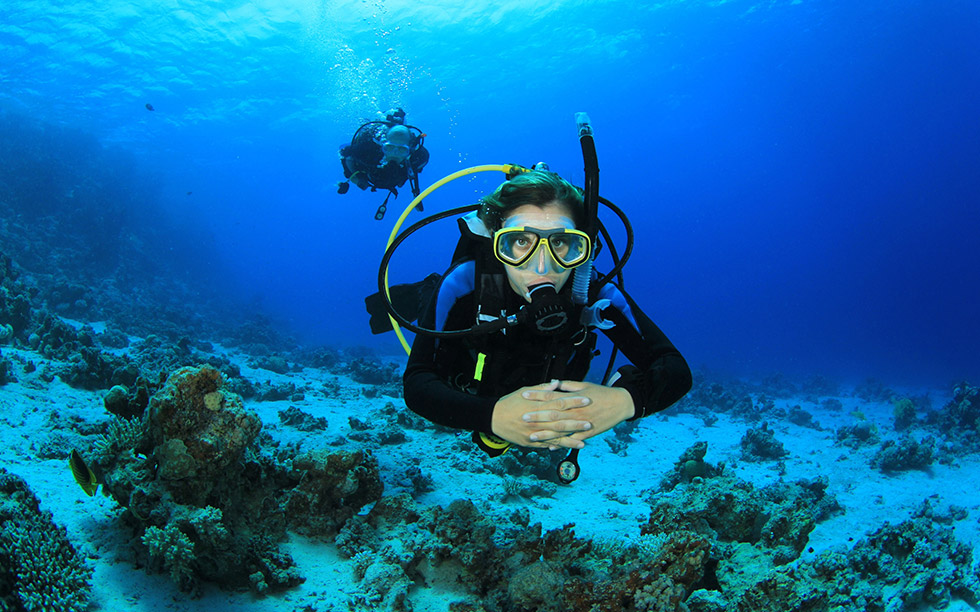


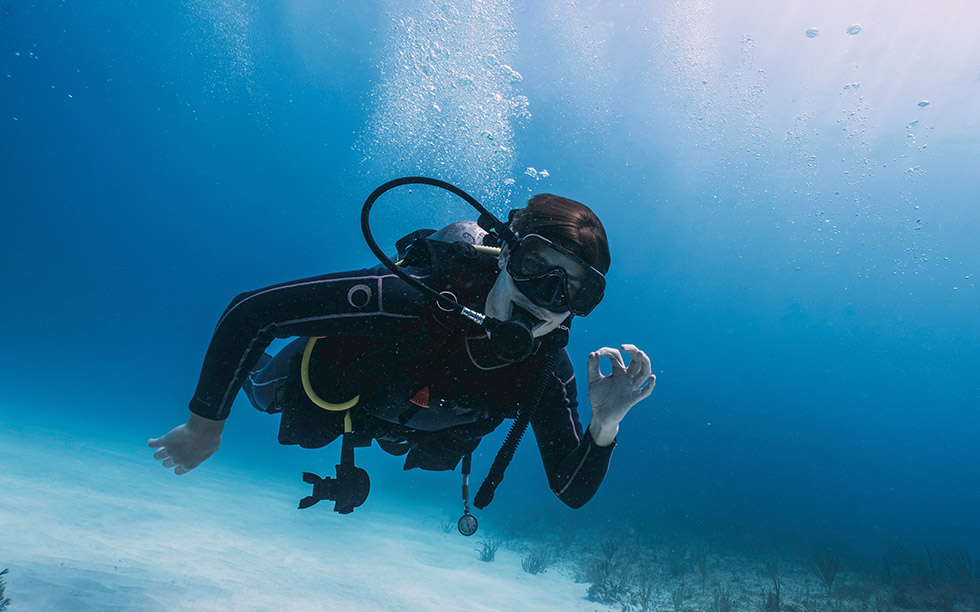


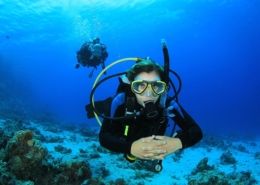
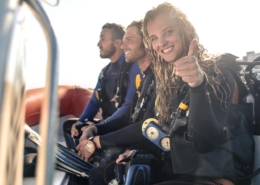
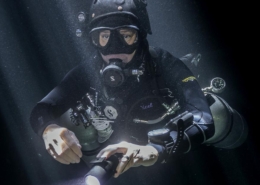
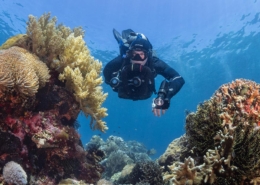
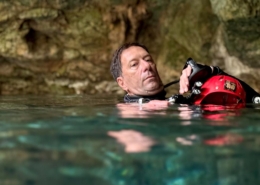

Leave a Reply
Want to join the discussion?Feel free to contribute!